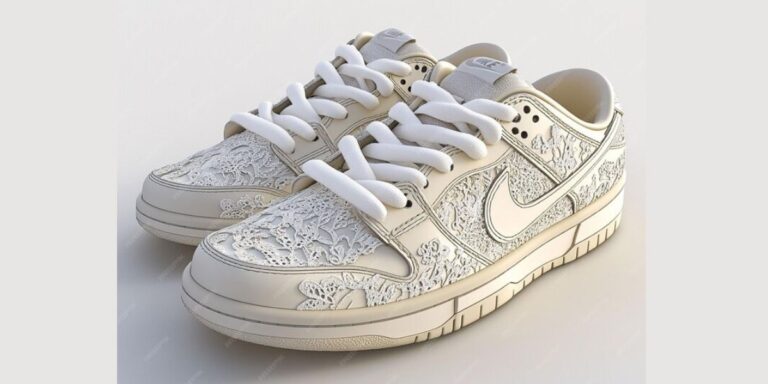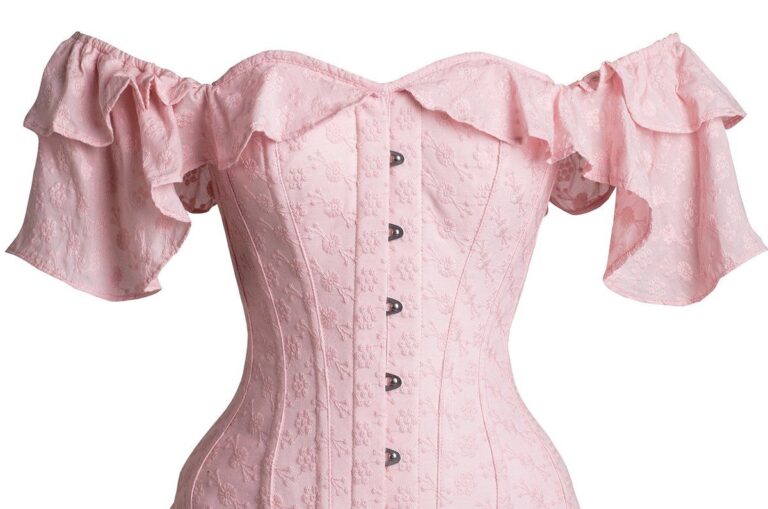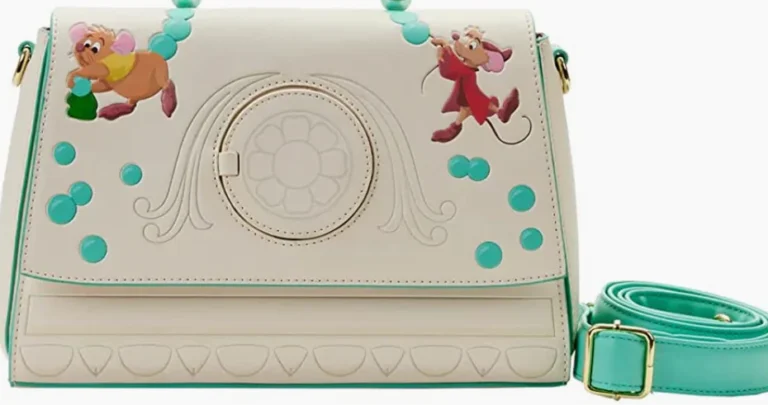From Pain to Pleasure: Debunking Common Myths About Helix Piercings
Are you considering getting a helix piercing? Perhaps you’ve heard some horror stories or are feeling a bit uncertain about the process. Well, fear not! In this blog post, we will debunk common myths surrounding helix piercings and provide you with all the information you need to make an informed decision.
From pain levels and healing times to aftercare tips and costs, we’ll cover it all. So sit back, relax, and let’s dive into the wonderful world of helix piercings. Prepare to have your worries alleviated as we separate fact from fiction in this ultimate guide!
What is a helix piercing?
A helix piercing is a type of ear piercing that is done on the outer rim of the cartilage, specifically in the upper portion of the ear. It’s called a helix piercing because it refers to the curved shape of this part of the ear. This popular form of body modification allows individuals to express their personal style and add some flair to their overall look.
The procedure involves making a small hole in the cartilage using a sterilized needle or hollow piercing gun. It’s important to note that getting a helix piercing should always be done by a professional piercer who follows strict hygiene practices to minimize any potential risks or complications.
This type of piercing offers endless possibilities for customization. You can choose from various jewelry options such as studs, hoops, cuffs, and even dainty chains that connect multiple piercings together. With so many choices available, you can truly make your helix piercing unique and tailored to your individual taste.
It’s worth mentioning that while most people opt for one helix piercing, some also choose double or triple piercings along their ear rim for an even more striking effect. The beauty of helix piercings lies not only in their aesthetic appeal but also in how they allow you to showcase your personality through creative combinations and arrangements!
Do helix piercings hurt?
Do helix piercings hurt? This is a common question that many people have when considering getting this type of piercing. The truth is, everyone’s pain tolerance varies, so the level of discomfort experienced during a helix piercing can differ from person to person.
Some people describe the sensation as a quick pinch or pressure, while others may feel more intense pain during the process. However, it’s important to remember that the initial discomfort is temporary and typically lasts only for a few seconds.
It’s worth noting that most professional piercers are skilled at minimizing pain during the procedure by using techniques such as numbing creams or ice packs. Additionally, opting for high-quality jewelry made from materials like titanium can help alleviate any potential discomfort during healing.
If you’re concerned about pain but really want a helix piercing, don’t let fear hold you back! Many individuals who have gone through with it report that any initial discomfort was well worth the end result – a stylish and unique addition to their ear jewelry collection.
How long does a helix piercing take to heal?
Helix piercings have gained popularity in recent years, but many people still have questions and concerns about the healing process. If you’re considering getting a helix piercing, it’s important to understand how long it takes to heal.
The healing time for a helix piercing can vary from person to person. On average, it takes about 3-6 months for a helix piercing to fully heal. However, some individuals may experience a shorter healing time of around 2-4 months, while others may take longer – up to a year or more.
During the initial stages of healing, it’s normal for your helix piercing to be red, swollen, and tender. You may also notice some discharge or crustiness around the area. These are all signs that your body is working hard to heal the wound.
To ensure proper healing, it’s crucial to follow aftercare guidelines provided by your piercer. This includes cleaning the piercing with saline solution or mild soap twice daily and avoiding touching or twisting the jewelry unnecessarily. It’s also important not to change or remove the jewelry until the recommended healing period has passed.
Remember that everyone heals at their own pace and complications can arise if proper care isn’t taken during this delicate period. If you experience excessive pain, prolonged swelling or any signs of infection such as pus or severe redness around the site, consult with your piercer or healthcare provider immediately.
Patience is key when it comes to helix piercing healing times! While most people will see significant improvement within 3-6 months , remember that individual factors like genetics and overall health play a role in determining how quickly your body heals. By following proper aftercare practices and seeking professional guidance if needed,you’ll increase your chances of enjoying a successful healed helix piercing!
What is the proper aftercare for a helix piercing?
Proper aftercare is crucial for the healing process of your helix piercing. Here are a few tips to ensure that your new piercing stays clean and healthy.
It’s important to clean your piercing twice a day with a saline solution or an antimicrobial soap specifically designed for piercings. Gently remove any crust or debris around the area using a cotton swab or sterile gauze pad. Avoid touching the jewelry directly with dirty hands.
Avoid sleeping on the side where your helix piercing is located, as this can cause irritation and prolong healing time. If you find it difficult to sleep on the other side, consider using a travel pillow or donut-shaped cushion to provide support and keep pressure off your piercing.
Additionally, be mindful of what products come into contact with your new piercing. Avoid applying hair products such as hairspray or gel near the area as they can cause irritation. Similarly, avoid swimming in pools or hot tubs during the healing period to prevent exposure to bacteria that could lead to infection.
Resist the urge to change out your jewelry too soon. It’s best to wait until your helix has fully healed before experimenting with different styles and sizes of earrings. This usually takes 6-12 months depending on individual healing times.
Remember, proper aftercare is essential for ensuring successful healing of your helix piercing! Stay committed and follow these guidelines diligently for beautiful results.
What should you do if your helix piercing becomes infected?
If you notice any signs of infection in your helix piercing, it’s important to take immediate action. Ignoring the issue can lead to further complications and prolonged healing time. So, what should you do if your helix piercing becomes infected?
Don’t panic! Infections are relatively common with piercings, but they can be easily treated if caught early. The first step is to keep the area clean by gently washing it twice a day with saline solution or a mild antibacterial soap. Avoid using alcohol or hydrogen peroxide as these can irritate the skin.
Avoid touching or twisting the jewelry as this can introduce more bacteria into the wound and worsen the infection. Instead, use clean hands when applying any topical antibiotic ointments recommended by your piercer or doctor.
Try not to remove the jewelry unless advised by a professional. Removing it prematurely can cause the hole to close up before the infection has fully cleared, trapping bacteria inside.
If symptoms persist or worsen after a few days of diligent care, seek medical attention immediately. A healthcare provider will be able to assess whether oral antibiotics are necessary for treating a severe infection.
Remember that infections happen occasionally and shouldn’t deter you from getting a helix piercing altogether. With proper aftercare and timely intervention when needed, most infections can be resolved without major issues arising. Stay vigilant and follow these steps so you can enjoy your beautiful healed helix piercing soon!
What are the different types of jewelry available for helix piercings?
When it comes to helix piercings, one of the most exciting aspects is choosing the perfect jewelry to adorn your ear. There are numerous options available, allowing you to express your style and personality.
Studs are a popular choice for helix piercings. They come in various designs such as simple geometric shapes or sparkling gemstones. Studs provide a classic and elegant look that can be dressed up or down depending on the occasion.
Hoop earrings offer a more edgy and bohemian vibe for helix piercings. These circular earrings come in different sizes and thicknesses, giving you the freedom to customize your look. You can opt for sleek silver hoops or go bold with colorful enameled ones.
Barbells are another type of jewelry commonly used for helix piercings. These straight rods feature decorative ends that add flair to your piercing. From intricate patterns to dangling charms, barbells allow you to showcase your creativity while accentuating your ear’s shape.
Captive bead rings (CBRs) are versatile options for helix piercings. As their name suggests, they consist of a ring with a removable bead that is held in place by tension between the two ends of the ring. CBRs come in different materials like titanium or surgical steel and offer endless possibilities for personalization.
How much does a helix piercing cost?
When considering getting a helix piercing, one question that often comes to mind is how much it will cost. The price of a helix piercing can vary depending on several factors.
The location of the piercing studio plays a role in determining the cost. Piercing studios in larger cities or more upscale areas may have higher prices compared to those in smaller towns or less affluent neighborhoods.
The experience and reputation of the piercer can influence the cost. Highly skilled piercers with extensive training and expertise may charge more for their services.
Another factor that contributes to the overall cost is the type of jewelry used for the piercing. There are various options available, including basic stainless steel rings, fancier gold or diamond studs, and custom-made pieces. The material and design you choose will impact the final price.
Additional charges such as aftercare products or consultations might also be included in the total cost.
It’s important to keep in mind that while price is certainly a consideration when getting a helix piercing, it should not be your sole determining factor. It’s crucial to prioritize finding an experienced and reputable piercer who follows proper hygiene practices rather than focusing solely on saving money.
Debunking myths about helix piercings
Myth #1: Helix piercings are extremely painful.
Reality: While pain tolerance varies from person to person, many individuals describe the pain of getting a helix piercing as mild to moderate. The initial discomfort typically lasts only for a few seconds during the actual piercing process. With proper aftercare and maintenance, any discomfort or soreness should subside within a few days.
Myth #2: Helix piercings take forever to heal.
Reality: Healing times for helix piercings can vary depending on factors such as individual healing abilities and how well you follow the aftercare instructions. On average, it takes about 3-6 months for a helix piercing to fully heal. However, it’s important to note that cartilage piercings generally take longer to heal compared to lobe piercings.
Myth #3: Aftercare for helix piercings is complicated and time-consuming.
Reality: While proper aftercare is crucial for any type of body piercing, taking care of your helix piercing doesn’t have to be complicated or overly time-consuming. The key is keeping the area clean with saline solution or non-alcoholic antiseptic solutions recommended by your professional piercer. Avoid touching or twisting the jewelry excessively and ensure good hygiene practices around your pierced ear.
Myth #4: Infections are common with helix piercings.
Reality: With correct aftercare procedures followed diligently, infections are rare in properly done and cared-for helix piercings. It’s essential not to ignore signs like excessive redness, swelling accompanied by pus discharge or severe pain which may indicate an infection. If you suspect an infection, seek advice from your piercer or a healthcare professional for appropriate treatment.







